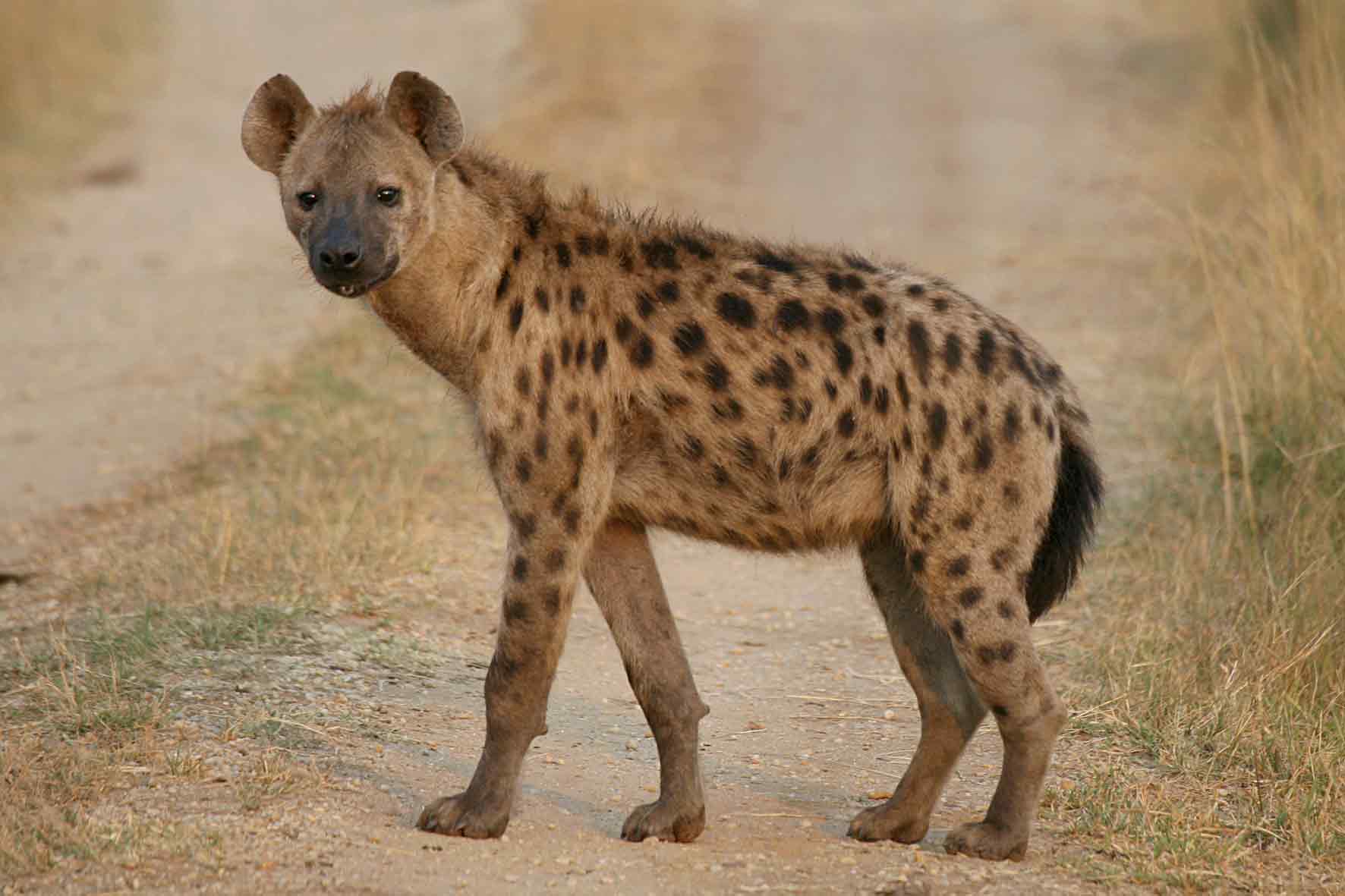
Hyenas comprise four carnivore species of the
family Hyaenidae, with body shapes similar
to wolves; awkward-looking hind legs shorter
than the front legs; good hearing; good vision; and
a good sense of smell. Sizes range from small
aardwolves to large spotted hyenas. All inhabit
grasslands and shrubby areas in Africa, the Middle
East, and Arabia.
Some species form packs; others live alone.
Most scavenge anything they find, including carrion.
Aardwolves eat carrion but prefer termites.
Hyenas mate year round and have two- to fourmonth
gestation periods, depending on species.
Physical Characteristics of Hyenas
The physical characteristics of three of the four hyena
species are exemplified by the spotted hyena,
the largest, strongest species. Their maximum
length is six feet, height three feet, and weight 175
pounds. Spotted hyena hind legs are shorter than
their front legs, making them look awkward. They
also have four-toed paws and manes of coarse hair
on the neck, shoulders, and back. The adults are a
brown-gray with brown spots, and have large
heads, bone-crushing jaws, and an eerie, "laughing"
cry, like hysterical human laughter.
Laughing (spotted) hyenas were long thought
to be carrion-eaters only. It is now clear that they
are major predators of live herbivores such as zebras.
They attack in packs at night, bite their victims,
and hold on until the prey stumbles. They
kill by tearing open the belly of the prey. Spotted
hyenas kill other carnivores as well, such as
striped and brown hyenas.
Striped and brown hyenas have manes, short
hind legs, and bone-crushing teeth. They are
smaller and less aggressive than laughing hyenas,
inhabiting grassy and shrubby areas of Africa, India,
and the former U.S.S.R. Their gray-brown,
black-striped fur is fine camouflage. Like other
hyaenids, striped hyenas eat carrion. They also eat
fruit, small mammals, birds, and sometimes large
herbivores, such as antelope. They grow to maximum
lengths of 5.5 feet, heights of 2.5 feet, and
weights of 125 pounds. Spotted hyenas hunt at
night in small packs.
Brown hyenas are dark brown with gray heads
and striped legs. Theirmaximumlength is 4.5 feet,
and they reach 120 pounds. They inhabit the dry,
rocky Southern African deserts, usually traveling
alone. As scavengers they eat anything available,
including carrion and bones picked clean by
vultures, using strong teeth to crack bones for
marrow.
Aardwolves, honorary hyenas, inhabit much
of Africa. They are hyaenid by appearance, as
their backs slope down from shoulder to tail due
to short hind legs. They have reddish, blackstriped
fur and manes on their necks and shoulders.
When attacked, aardwolves erect the mane
to look fiercer and spray evil-smelling musk from
perineal glands.
Aardwolves differ from hyenas in having fivetoed
front feet. Aardwolf teeth are small and suitable
only for eating their main food, termites and
other insects. Their maximum length is 2.5 feet,
their height is 1.5 feet, and their weight is twentyfive
pounds. The termites that aardwolves eat are
active at night, so aardwolves are nocturnal and
eat termites with their long, sticky tongues.
Aardwolves live alone and mark territories with
musk, denning in empty burrows of other animals.
The Life Cycle of Hyenas
There are similarities and differences in hyena
species lives. Spotted hyenas form groups of up to
one hundred: a few males, many females, and numerous
young. Females conceive year round,
birthing two or three pups that can see and run
immediately, after a four-month gestation. Females,
larger than males, select short-term mates.
Striped hyenas fight within groups, sometimes
killing group members. Maximum life spans are
twenty-five years in the wild and forty years in
captivity.
Like spotted hyenas, striped hyenas mate year
round. They live in small groups or alone.Athreemonth
gestation yields two to five young born
with the eyes not yet open. Mothers nurse offspring
until they can feed themselves. Life spans
are up to twenty-five years in captivity. Brown hyena
life cycles and reproductive habits are nearly
the same as in striped hyenas. However, they live
alone except when mating or nursing young.Aardwolves live in groups. They have a mating
season when males fight for females and winners
mate. Gestation is two months and yields
two to five young, nursed for two months. Aardwolves
live for fifteen years in captivity.
Spotted, striped, and brown hyenas eat carrion,
preventing its decay and its endangerment
of humans and other animals. Aardwolves eat termites,
preventing damage to the wilderness and
human habitations. These activities are their main
ecological function. As spotted and striped hyenas
eat live food, they also kill injured or weak
members of other species, helping the species
eaten to enhance their long-term survival.
Hyena Facts
Classification:
Kingdom: Animalia
Subkingdom: Bilateria
Phylum: Chordata
Subphylum: Vertebrata
Class: Mammalia
Order: Carnivora
Family: Hyaenidae (hyenas and aardwolf)
Genus and species: Crocuta crocuta (spotted hyena);
Hyaena brunnea (brown hyena), H. hyaena
(striped hyena); Proteles cristatus (aardwolf)
Geographical location: Asia, Africa, and parts of
the former Soviet Union
Habitat: Deserts, grasslands, shrubby areas, forests,
and mountains
Gestational period: Depending on species, two
to four months
Life span: Fourteen to twenty-five years in the
wild, twenty-five to forty-five years in captivity
Special anatomy: Manes; four- or five-toed paws;
hind legs shorter than forelegs; most have
teeth able to crush bones, but the aardwolf eats
only insects
Other popular Animals
Photo Gallery of - Hyena

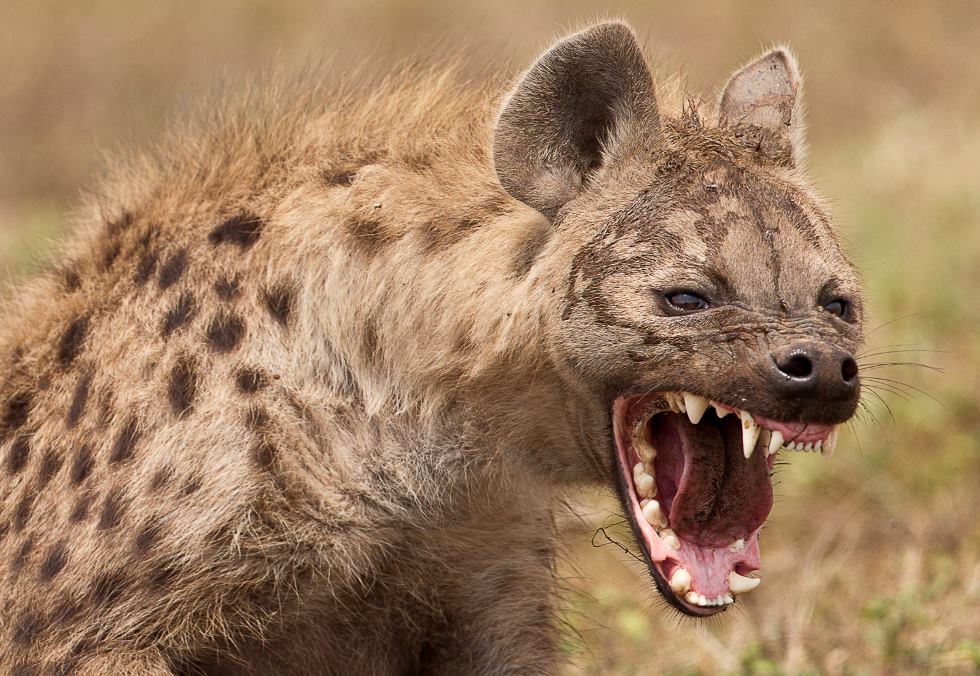
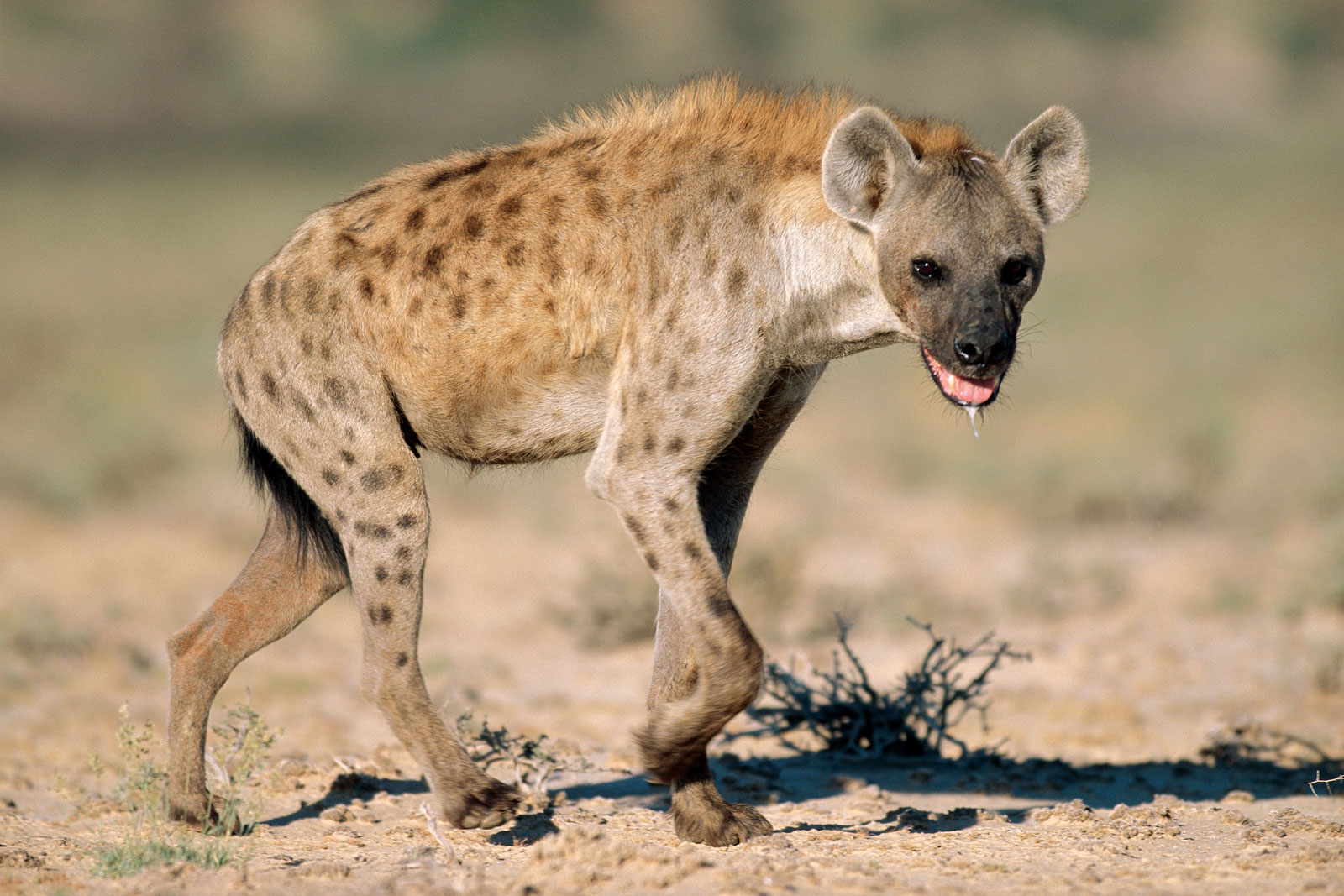
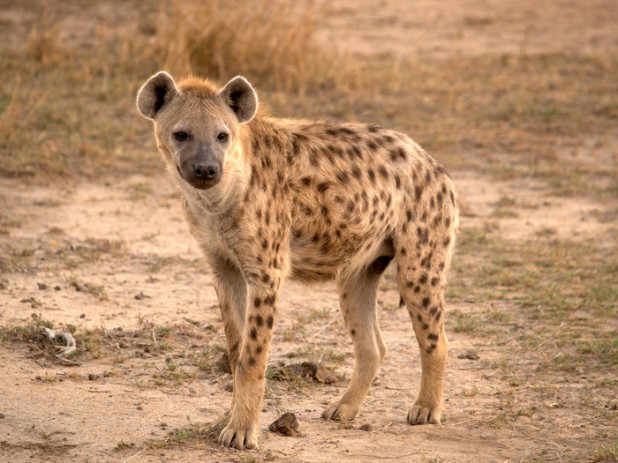
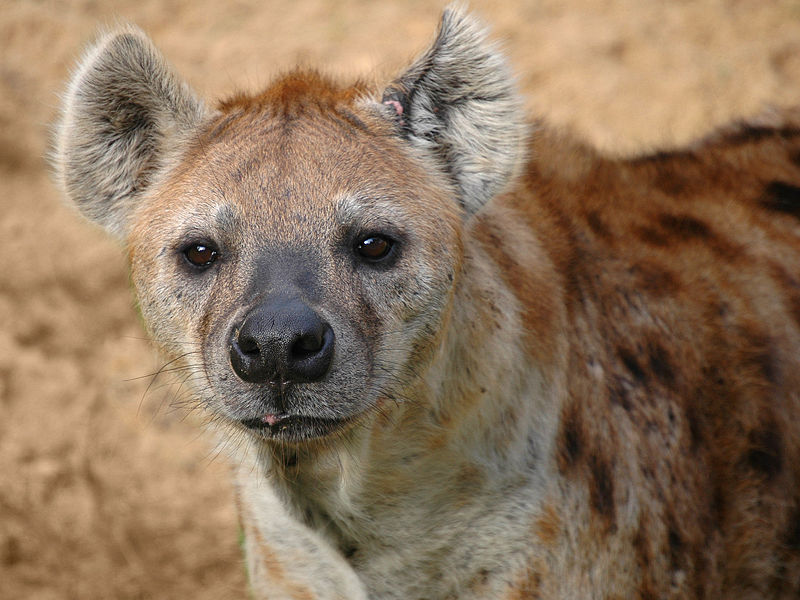
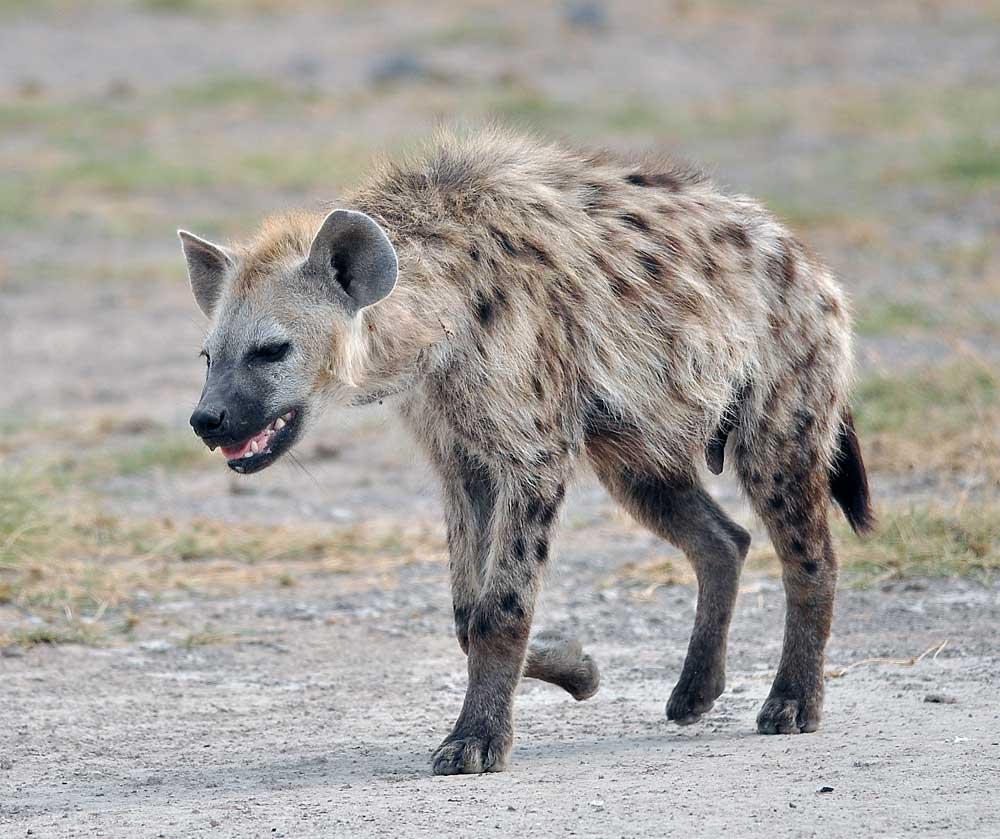
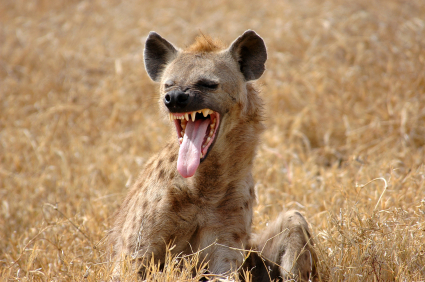
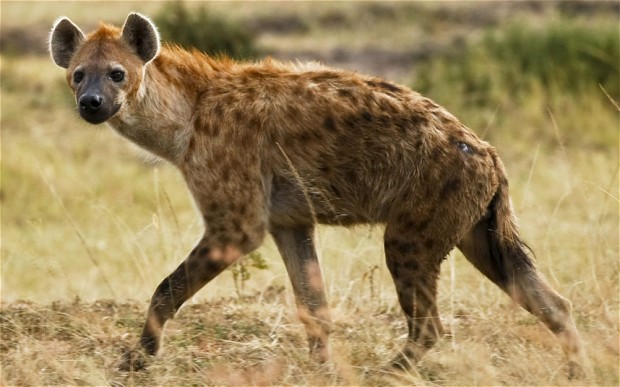
 Animalia Life
Animalia Life